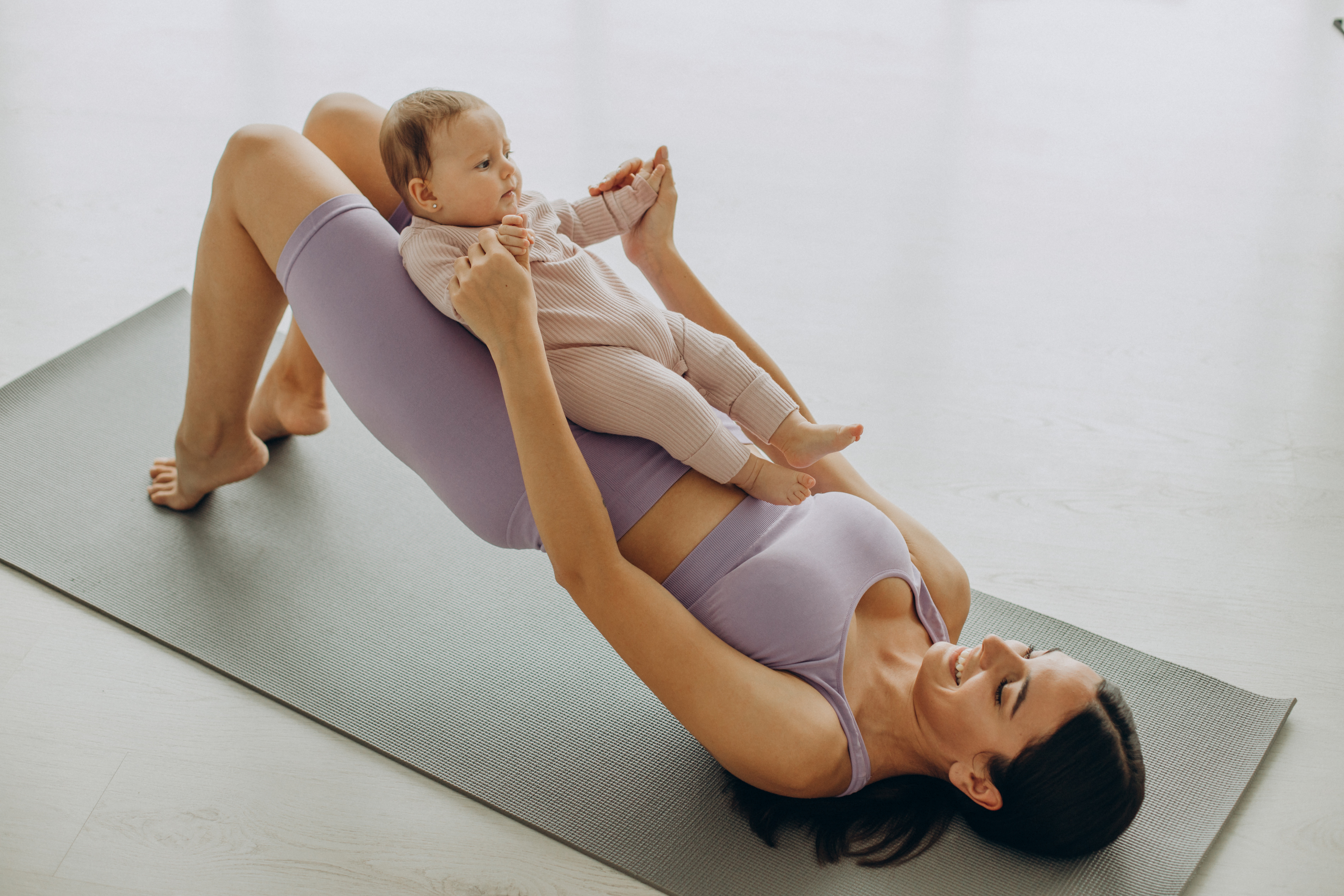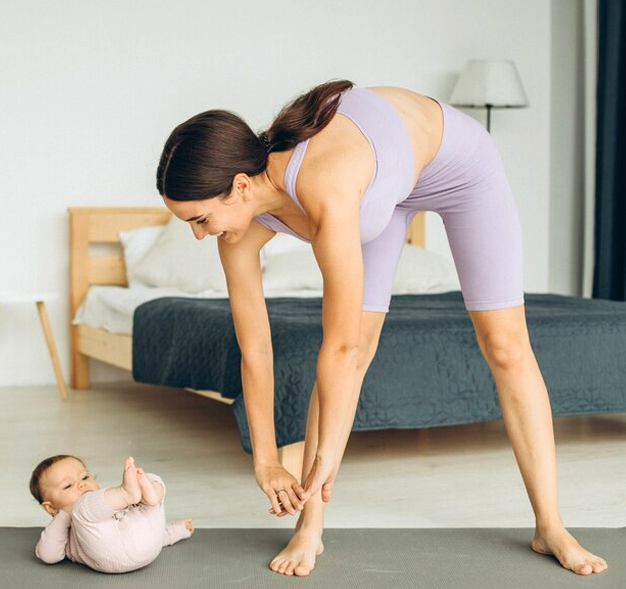
Giving birth to a new life is a life-changing experience, and for most mothers, this adventure features a C-section. Although it's a serious abdominal operation, it doesn't necessarily imply that your road to recovery has to be passive. Gentle, progressive exercise is key to returning to your pre-baby fitness level and maximising your overall health and well-being following a C-section.
Table of Content:-
Too often, there's a misunderstanding that a C-section means extended immobility to recover. Although rest is essential in the early days, adding proper exercise as approved by your physician can greatly help your physical and emotional recovery. In an exclusive interaction with the editorial team of Onlymyhealth, our expert, Dr Vikas Yadav, Senior Consultant, Department of Obstetrics, Gynaecology & IVF Specialist, ShardaCare, Healthcity - Noida, explained the many benefits and why exercising is important after a c-section delivery. Here is what he shared with us.
Benefits Of Exercising After C-Section
Postpartum exercise benefits far more than just ‘getting your body back.’ For C-section moms, these benefits are especially significant:
1. Faster Healing and Less Scar Tissue
Gentle motion brings extra blood flow to the incision area, which can contribute to quicker healing and less constraining, dense scar tissue. It's like feeding the healing process from the inside out.
2. Honing Your Core (Yes, Safely!)
Your abdominal muscles have been through extensive stretching and separation through pregnancy and subsequent surgery. Gently targeted core strengthening, once cleared by your healthcare provider, is crucial for restoring strength and stability. This is not crunch time right away; this is about re-familiarising yourself with your deep core muscles, such as the transverse abdominis, to stabilise your spine and pelvic floor.

Also Read: Newborn Tips: Here Is How To Recognise The Signs If Your Baby Is Hungry
3. Better Posture and Less Back Pain
Pregnancy and new motherhood (carrying around a baby, breastfeeding) can take a terrible toll on posture. Exercise to strengthen your back and core muscles can ease typical postpartum back pain and keep you better aligned.
4. Improved Pelvic Floor Function
Although a C-section avoids vaginal delivery, the pelvic floor nonetheless undergoes enormous stress during pregnancy. Pelvic floor exercises (Kegels) are important for all new mothers to avoid such complications as incontinence and prolapse, and to maintain overall pelvic organ function.
5. Higher Energy Levels and Overcoming Exhaustion
It may sound counterintuitive, but exercise can increase your energy. Even as you're probably operating on inadequate sleep, a walk or some gentle exercises can circulate the blood, alleviate exhaustion, and provide a welcome boost to your mental state.
6. Weight Regulation and Cardiovascular Well-being
Reintroduction to cardiovascular exercise, such as walking, supports healthy weight regulation and enhances cardiovascular well-being, essential for long-term health.
7. Increased Mood and Decreased Risk of Postpartum Depression
Exercise is an effective mood booster. The endorphins that result from physical activity can counteract the "baby blues" and decrease the risk and severity of postpartum depression, a key component of maternal health.
8. Enhanced Digestion and Less Constipation
Most new mothers suffer from constipation, particularly following a C-section. Gentle movement can stimulate bowel function and facilitate digestion.

When and How to Begin?
The key to C-section recovery is to listen to your body and your doctor. Each woman's recovery will be different. Here's a guide as shared by Dr Yadav:
1. The First Weeks (0-6 weeks)
Stress, rest, drinking, and eating. Extremely mild movements such as short walks in and around the home are often promoted from day one in order to avoid blood clots and enhance circulation. Contractions of the pelvic floor muscles (Kegels) can often be started within a few days, provided they are not painful. Do not lift anything over your baby, and no heavy lifting.
2. Following Your 6-Week Postpartum Visit
This is when your physician should provide the clearance to gradually intensify your activity level. Your incision, internal recovery, and general healing will be evaluated.
3. Slow Start and Gradual Progress
Avoid high-level exercise. Start with low-impact activities such as walking, light stretching, and certain postpartum exercises prescribed by a women's health physiotherapist.
4. Prioritise Core and Pelvic Floor Rehabilitation
Consult with a trained women's health physiotherapist who can evaluate your individual needs and develop a safe and efficient exercise program that addresses C-section rehabilitation. They can instruct you on how to effectively use your deep core muscles and rehabilitate your pelvic floor.
5. Watch for Warning Signs
Stop at once if you feel pain, heavy bleeding, discharge, or your incision becomes red, swollen, or begins to ooze. These are warning signs to check with your doctor immediately.
Types of Safe Postpartum Exercises Following C-Section (after physician approval):
Walking
- Pelvic Floor Exercises (Kegels)
- Gentle Abdominal Breathing/Diaphragmatic Breathing
- Pelvic Tilts
- Gentle Stretches
Bottomline
Post-baby exercise after a C-section is not about looking a certain way; it's about supporting full recovery, regaining your strength, enhancing your well-being, and embracing the amazing journey of motherhood with more energy. By honouring your body, respecting healthcare advice, and beginning slowly, you can effectively and safely regain your strength and benefit from the numerous advantages of movement in your post-baby life. Remember, you've just performed an incredible feat, now it's time to nurture yourself back to full strength.
Also watch this video
How we keep this article up to date:
We work with experts and keep a close eye on the latest in health and wellness. Whenever there is a new research or helpful information, we update our articles with accurate and useful advice.
Current Version